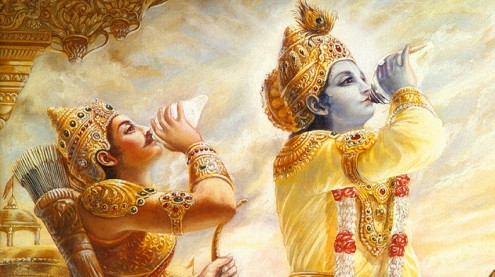LEADERSHIP ESSENTIALS FROM SUNZI’S ART OF WAR AND THE BHAGAVADGITA
Key Word: Leadership, China, India, Culture Paper type Conceptual paper
Purpose – This paper’s aim is to compare and contrast two ancient philosophies to determine their contribution to leadership. Fresh aspects to inclusiveness and resilience in leadership are to be examined. Design/methodology/approach – The paper uses a conceptual analysis as the basis for future empirical testing. The respective contribution of Sun Zi’s Art of War and the Bhagavad Gita to academic and practitioner literature is examined before keytraitson leadership that are common in both documents are collated. These features are then investigated on their practical application to business. Based on the research gaps and short comings identified, new areas for further research are recommended. Findings – These two ancient texts have contrasting ideas, yet there are areas of complementarity to suggest that Indian and Chinese leaders can learn from each other. Research limitations / implications – Future research may explore how in different forms of ownership including joint ventures or host country operations the perspectives of leadership can impact on the behaviour of managers towards employees of a different culture. Practical implications–Both Chinese and Indian cultures are growing in importance.This paper help sleaders from each culture to better understand the different mind-sets. Originality / value – Previous research has focused on the contrasts where as this research focuses on the synergies between the Art of War and the BhagavadGita.
Charles Chow Hoi Hee Bruce Gurd Key Word: Leadership, China, India, Culture Paper type Conceptual paper

